Green Ronin Publishing’s Chris Pramas is a people person. Not because he’s easy to get on with, which you’d expect from anyone who managed to thrive in an industry as close-knit as table-top roleplaying games (TTRPGs) for over 20 years, but because he cares
On January 25th, 2022, the company announced that their new title Cthulhu Awakens was hitting Kickstarter (it’s now available for pre-order), a take on Cthulhu Mythos created by the notoriously verbose, fantastically imaginative, and incredibly racist H.P. Lovecraft. To call him problematic is to undersell the scale of his ‘isms’, but we’ll come back to that.
Although massively influential, his is not a name that has cropped up much on The Companion. Rest assured, the Cthulhu Mythos is firmly baked into our world, from the superficial to the profound. Over the last couple of years alone, HBO’s criminally shortlived drama Lovecraft Country (2020) used the author’s reputation to prod and poke at ideas of race in America, and The Expanse drew on The Color Out of Space (1927) for the first couple of seasons, and At The Mountains of Madness (1936) for Season 4. The Color Out of Space had its own suitably weird and wonderful adaptation in 2019, by the way, whilst Doctor Strange in the Multiverse of Madness (2022) riffs more benignly on the title and the tentacled monstrosities.
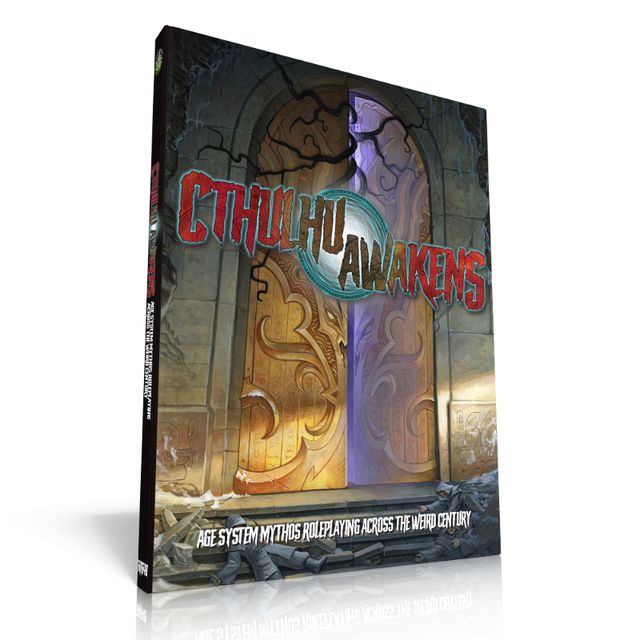
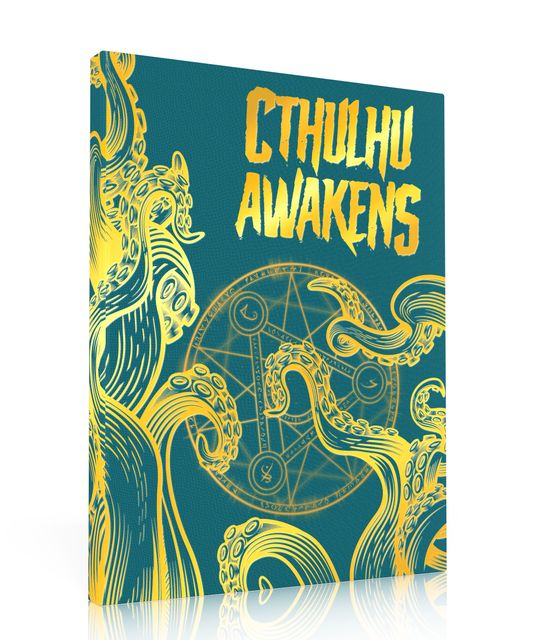
Addressing the Racism in H.P. Lovecraft
Lovecraft’s short story The Call of Cthulhu (1928), the birthplace of this loosely shared universe, introduced the idea of the Great Old Ones, ancient alien beings who visited Earth in its distant past, were worshipped as gods (and still are by all manner of scheming cultists), and built immense cities and temples which are now sites of awe to modern travelers. These alien overlords now lie in wait for their opportunity to awaken and reclaim Earth.
Writer and anthropologist Jason Colavito, author of The Cult of Alien Gods: H. P. Lovecraft and Extraterrestrial Pop Culture (2005), keenly draws the line from Lovecraft’s “cosmic horror” fiction to the ‘ancient astronauts’ hypothesis that has somehow filled 208 episodes of Ancient Aliens with piping hot bullshit. Lovecraft’s work underwent a reappraisal in the 1960s – well after his death in 1937 – and was reprinted in France by the magazine Planète (1961-1972). The magazine’s editors, Louis Pauwels and Jacques Bergier, previously presented the ideas as fact in The Morning of the Magicians (1960), which was then cited as an influence by the conspiracy theory’s founding fantasist, Erich von Däniken.

Von Däniken’s Chariots of the Gods? (1968) represented the arrival of the ‘ancient astronauts’ theory in popular culture, and it continues to ferment in the darker corners of YouTube and the History Channel. Ridley Scott first explored Lovecraftian ideas of cosmic horror in Alien (1979), before going on to reference von Däniken more overtly in Prometheus (2012) and Alien: Covenant (2017). Closer still, Roland Emmerich conceived Stargate (1994) after watching a 1970 German documentary on Chariots of the Gods.
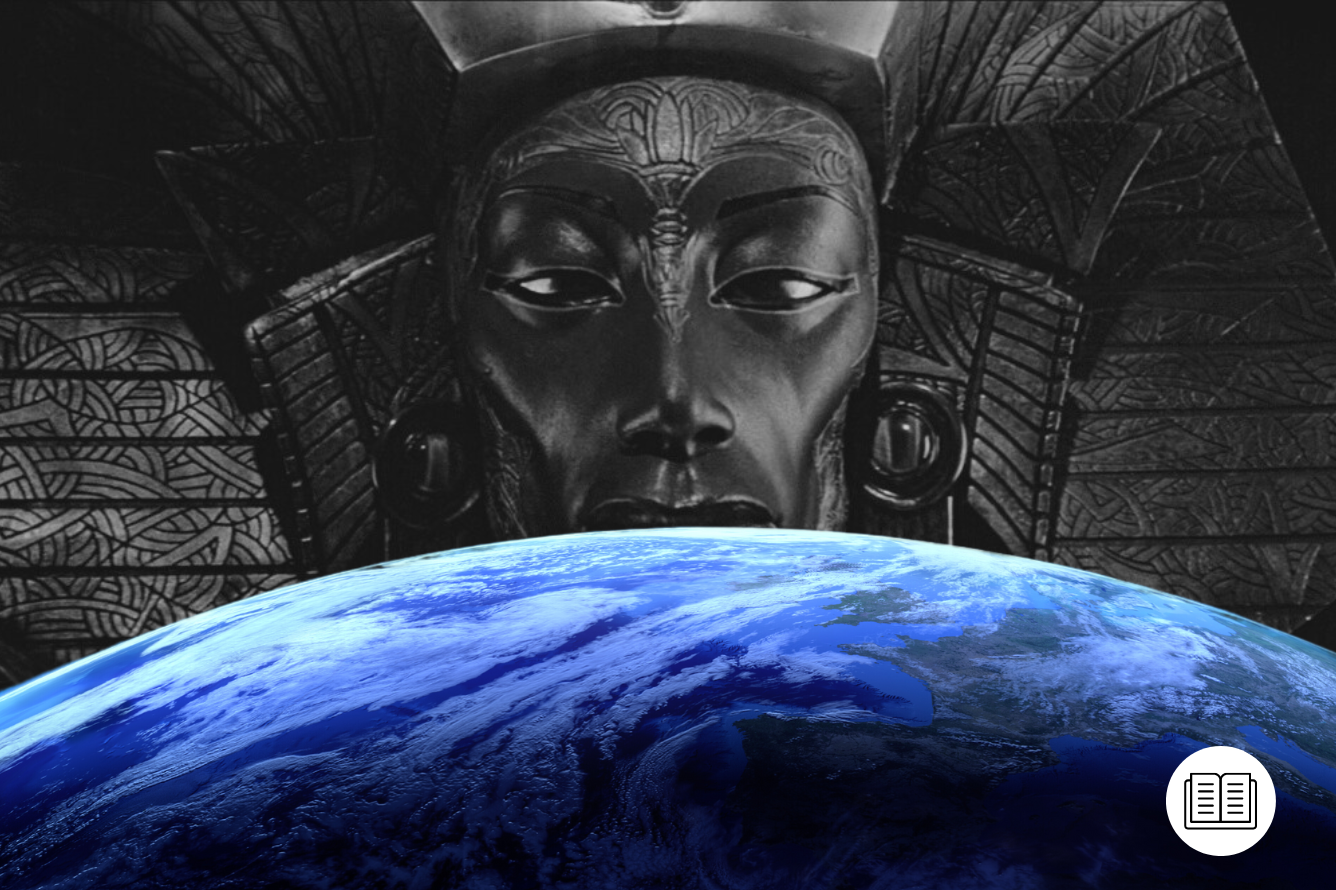
There’s no getting away from it, von Däniken’s discredited ideas are racist. The implication is that it’s far more likely aliens built the pyramids of Egypt or Central America than their indigenous people (to its credit Stargate SG-1 quickly addresses this by expanding its remit to the Norse pantheon, Arthurian myth, etc). But as bad as von Däniken is, Lovecraft is so much worse and Cthulhu Awakens is his reckoning.
In an FAQ on the Green Ronin website, developer at large Malcolm Sheppard set out the company’s position in unusually robust terms:
“H.P. Lovecraft was a white supremacist whose racism was notable even in his time, as attested to by letters from his own friends […] Standing against that kind of discrimination is morally obligatory, and it leads to more interesting possibilities than treating Lovecraft’s work as “canon.” In general communication we’ve had to emphasize this both because of Lovecraft’s notorious reputation and to ward off various people with terrible opinions, not to congratulate ourselves for not following the example set by a long-dead racist.”
Oof.
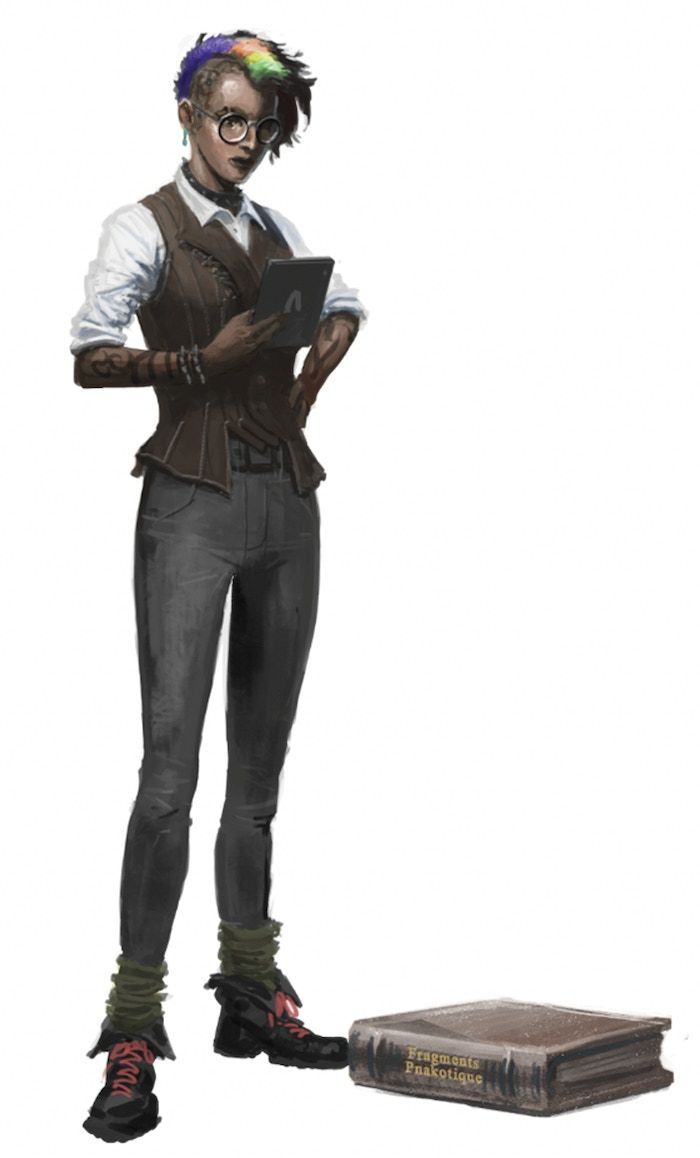
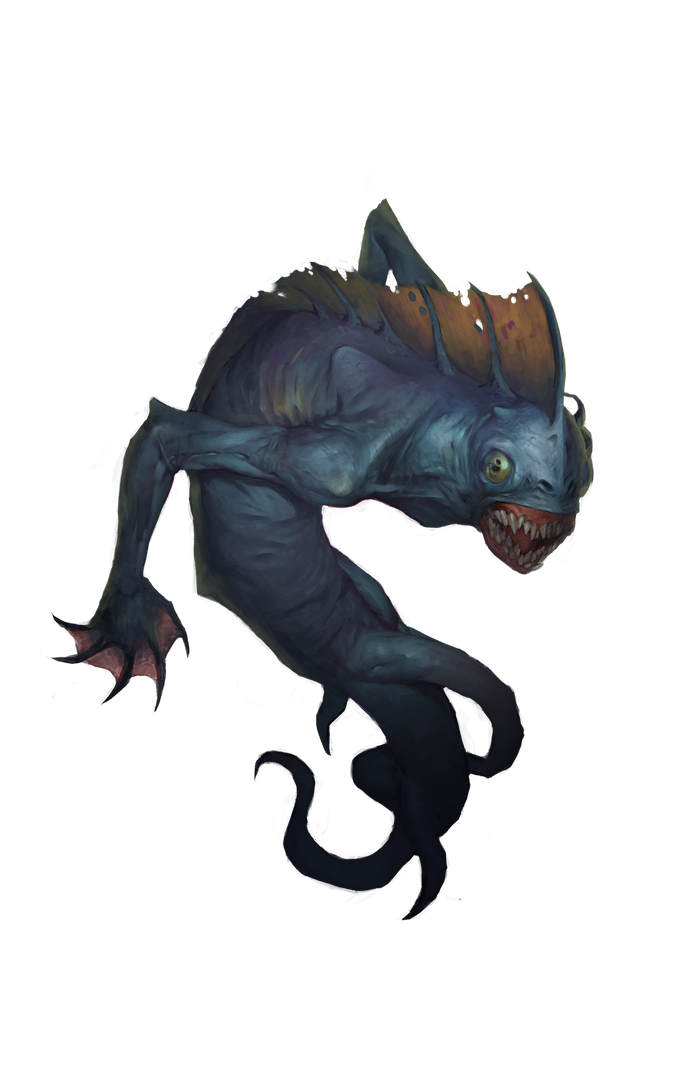
“After the last five years here in America, I’ve just had it with not making our views forthright,” explains Chris of Green Ronin’s strident positioning on a carefully scheduled call between a night owl on the West Coast and a pathologically early riser in the UK. “Before I was a game designer, I was a punk in the mid-80s – I still love punk today – and that taught me a lot of lessons, both politically, musically, obviously, but also about the whole DIY idea. And so, when I started the company, that’s what I was carrying forward.
“I had done freelance work for other companies, but when I started my own, it was like, ‘I’m gonna do what I want’. The punk rock attitude is carried through. In the ‘80s we didn’t treat nicely with Nazis, we had to kick them out of our shows, we didn’t want them around. Because if your point of view is, ‘Genocide’s okay when it’s the right people getting murdered’ – I don’t have anything in common with you and I don’t want to.”
How Hardcore Punk Influences Green Ronin
This surprising sidebar into the hardcore scene comes early in the conversation and it’s a revelation that explains a lot about the Green Ronin ethos so we press Chris for a potted biography of his time in the trenches.
“So I was in high school. I was 15. It’s 1985. That’s when I got into punk. And I started going to shows in Boston, Massachusetts. I grew up in a town called Peabody, which is about half an hour north of Boston. In a way, it was kind of like when I got into gaming when I was 10, in that I had just, like, pierced a whole new world and I was excited to discover it. I was involved in the Boston scene, ‘till 1987, and then I moved to New York City.
“I spent nine years there and I was very much involved in the scene there, particularly at a club-slash-artspace called ABC No Rio. It’s fairly well known in punk circles, though, at the moment, the building has been demolished and they’re rebuilding it. So they’re doing shows what they call ‘in exile’. We also had political activity there. Food Not Bombs would cook meals in the kitchen and take them out to Tompkins Square Park.”
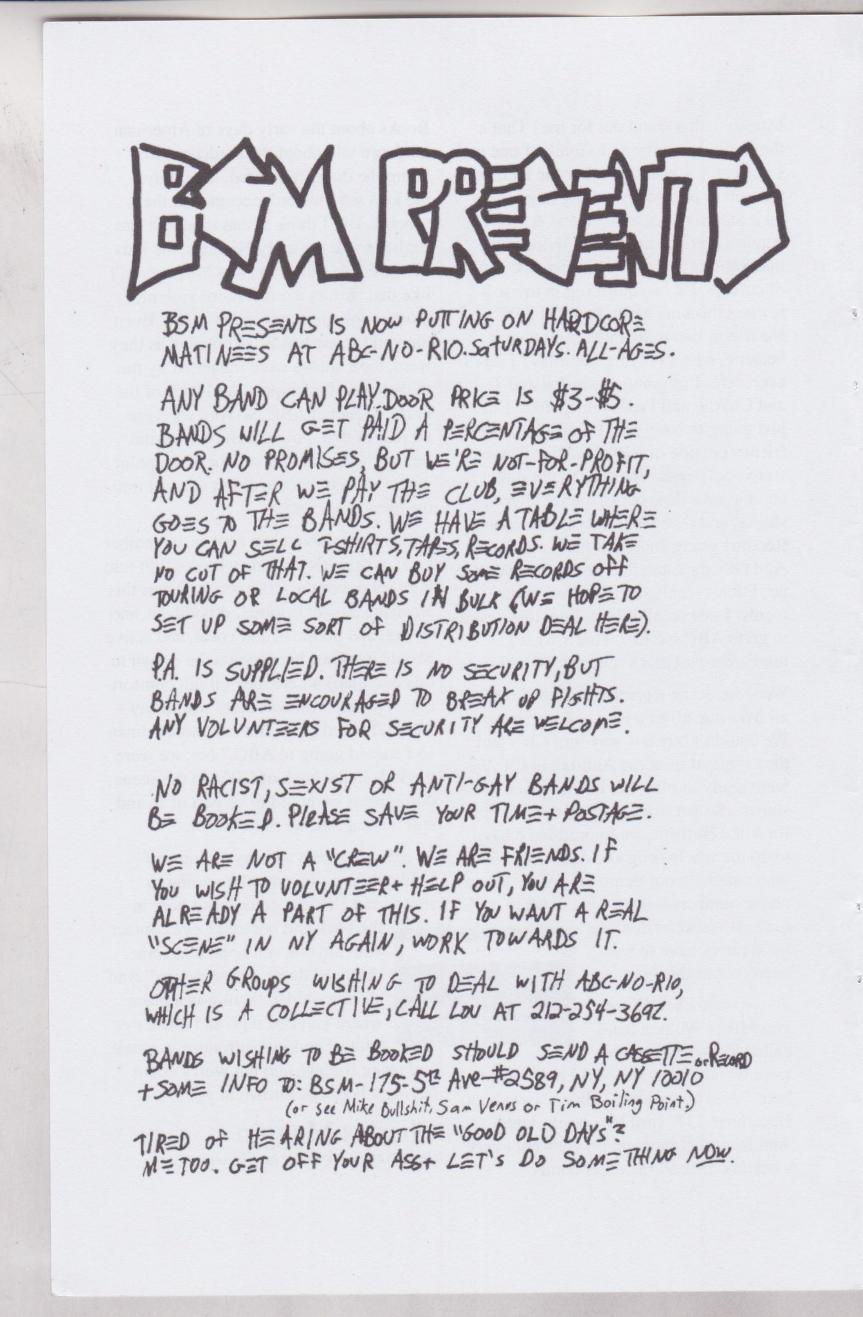
In Saturday Matinee at ABC No Rio: 1990-91: A Visual Retrospective (2015), Melissa York (who briefly played drums in one of Chris’s bands, he informs me) recalled: “ABC’s policy of ‘no racist, homophobic or sexist bands will be booked’ completely opened my eyes to my privilege and hypocrisies as well as a lot of other people’s injustices. At ABC we would call each other one our shit all the time. I started seeing clearer. Having that influence of ‘fuck it, we’re not going to stand for that shit’ helped me become me.”
“We were the misfits of the New York hardcore scene,” continues Chris. “There was like, the whole macho Agnostic Front-style stuff happening there. That was really not my jam, the big skinheads just beating each other up in the pit at CBGBs was not of huge interest to me. There were a lot of people like me, who loved punk rock, not so much into the real machismo that had come in with hardcore… I mean, sure, I’ll go to some hardcore matinees at CBGBs, but I don’t really feel so much a part of that sub-scene. We were the misfits amongst the misfits.”
The idea of being a misfit within the wider tribe of misfits is a fitting starting point for the whole idea of Cthulhu Awakens and its defense of inclusivity. Identity is a complex business in 2022, and so privilege is a complex business too. Some people have some, some people have very little, and whether one person who has very little has more or less than someone else who has very little depends entirely on context.
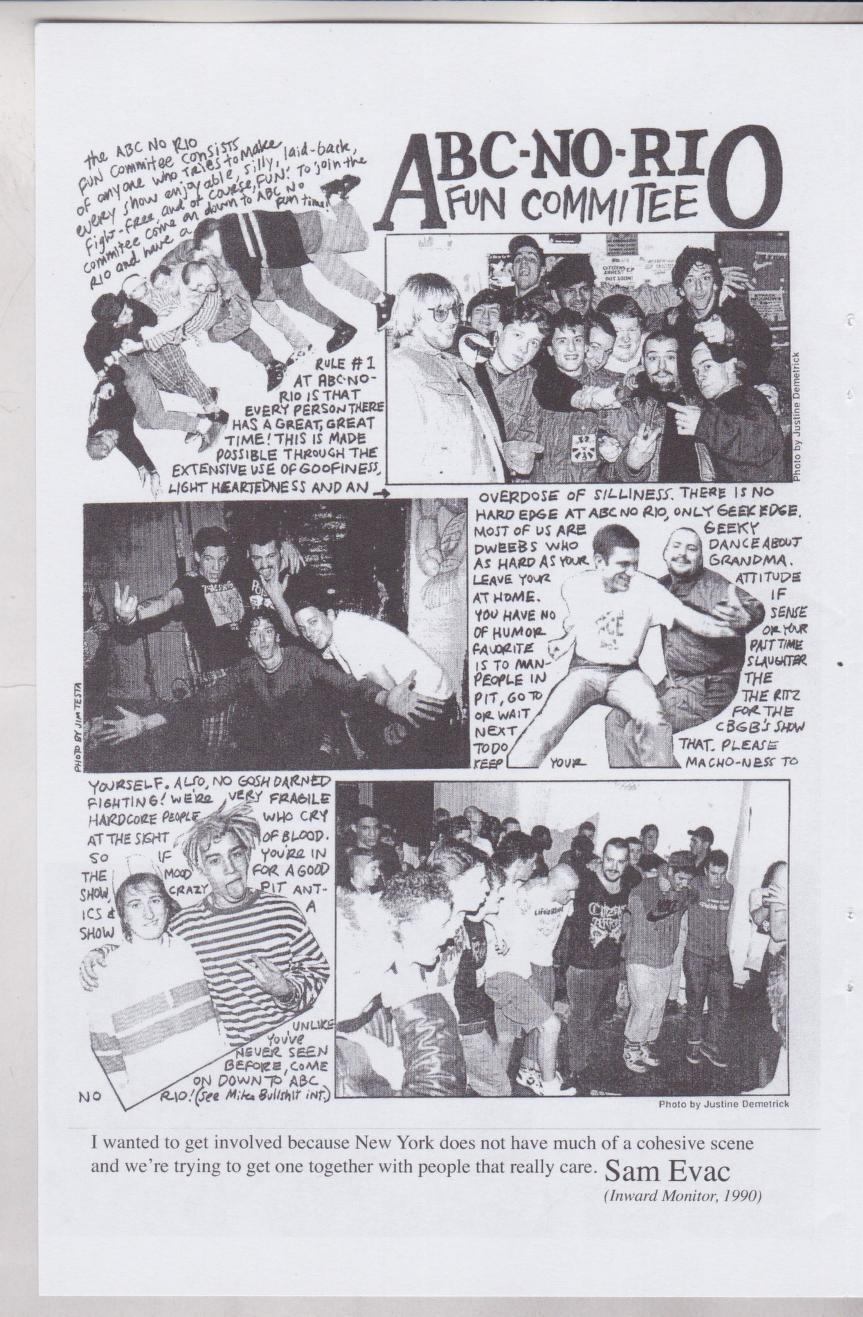
Over the last few years – and especially with the pandemic – the big papa of all roleplaying games, Dungeons & Dragons has grown in popularity, seeing an influx of socially aware young gamers who have shifted the demographics away from straight, white, and male. In 2021, D&D had its own sordid ‘gamergate’ moment that lives on primarily in the minds of the less tolerant. It’s not worth going into any detail, other than to say that the reactions have been telling. One YouTuber defended their right to bigotry, fuming:
“It’s like it’s school, you’re sitting at the lunch table. You see the new kid, the new kid’s by themselves, you say ‘Hey new kid, why don’t you come and sit with us so you’re not by yourself?’ And then the new kid’s like ‘Okay, but I’m going to bring five of my friends, so can you move down?’ And then they move down until they’re completely kicked you out of that table, and now it’s them and all their friends. Then they tell you to go someplace else because that’s their thing now […] they talk about being inclusive but they’re the most exclusionary people I’ve seen. They’re like ‘You need to give a statement saying you’re inclusive because we’re pissed and want to be exclusionary towards certain groups of people [ie. racists, misogynists, and transphobes]’.”
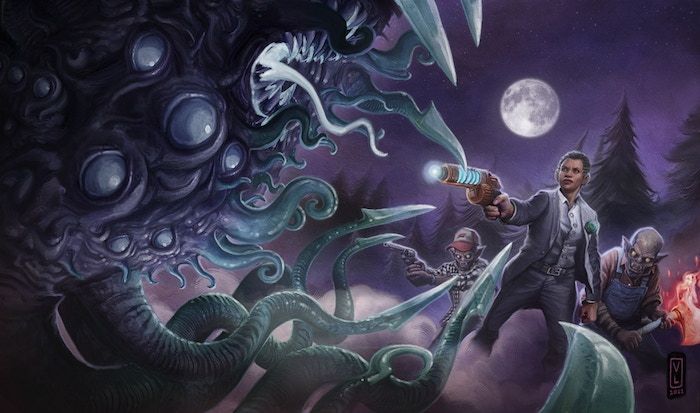
There’s a lot going on in this incoherent burbling, namely that people should be ‘grateful’ to be allowed to play Dungeons & Dragons, rather than being “exclusionary” by excluding the exclusionary (which is really the latest incarnation of the ‘reverse racism’ conspiracy). And hang on, does this hypothetical “new kid” have friends or not?
“I honestly don’t understand the fear and often hatred of women,” says Chris. “In the ‘80s, I was part of two subcultures that did not have a large percentage of women. It was punk rock in the hardcore years, and it was role-playing games. Those were very male-dominated things and what I wanted as a young person was for more women to come into these subcultures, because why wouldn’t I want that? Like, let’s get more people in the scene, let people learn what the fun is here, or what the revolution is there, or whatever. So the idea of gatekeeping and trying to, like, keep people out. I just don’t understand it.
“As the years have gone by, we have more and more marginalised people on our core team. This shit isn’t a joke to them – people are trying to legislate trans people out of existence. That’s not just a difference of opinion.”
“We’ve got people in the company who came out in the 80s or early 90s, and it was an extremely different scene. When we put a gay character in our Freedom City setting [for superhero game Mutants & Masterminds] in 2002/2003, that was like, daring for the game industry. Times have changed, the company has changed and, we want our people to feel comfortable here but also feel like they’re being represented.”
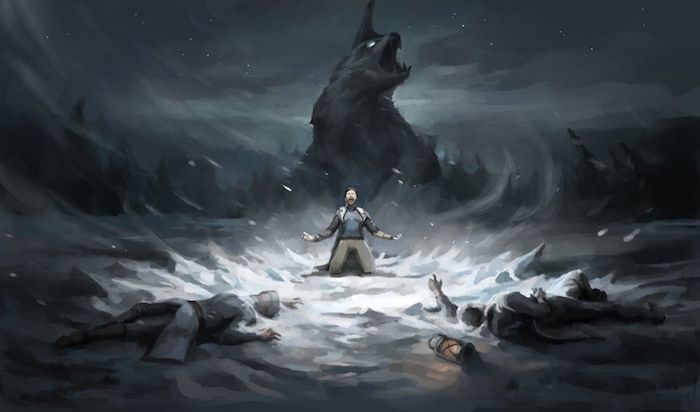
At the top of Green Ronin’s hitlist for their take on the Mythos was to shed the racism implicit in the original writing, and lurking in the background of more faithful adaptions of his work. “The horror for him essentially involves ‘degenerate races’. There’s the Tcho-Tcho these barbarians, cultists, you know, worshippers, and their entire culture, and all those people are just degenerate and evil. That’s kind of gross in the 21st century. So you won’t find the Tcho-Tcho in Cthulhu Awakens.”
Hot on racism’s heels is Lovecraft’s attitude towards mental health that has endured into a lot of his adaptations where ‘sanity’ is a slide-rule and a glimpse of gibbering horrors gets characters stuffed into straight jackets.
“Basically, what you see in Lovecraft is a literary madness, where these people aren’t mentally ill. They’re being overwhelmed by the experiences that they’re having, dealing with alien psychology. So that’s how we tried to treat it in Cthulhu Awakens, where, you know, you don’t get ‘Insanities’, you get Distortions, where essentially your brain is aligning to the Mythos understanding of how the universe works. That sits very uncomfortably with your normal human brain. There are instances where this can lead to insights, so it’s not necessarily all bad. But a lot of those insights are going to lead you down a path that makes you less human in the end, so…”
Applying the AGE System
Gamers have been dabbling in the Cthulhu Mythos for almost as long as roleplaying has existed as a hobby which Chaosium’s Call of Cthulhu received its first edition in 1981. As a player or GM, you can sit down for a session of CoC and simply… not be racist, so why do we need Cthulhu Awakens?
“First of all, like the game doesn’t pretend that there is no racism on Earth,” explains Chris. “Even in this alternate Earth you can encounter racists in Cthulhu Awakens, you can punch Nazis – it’s all good. What we want to get away from was just the built-in assumptions of Lovecraft, who was notably racist in his day.
“It’s not just like, ‘Oh, you know, people in the ‘20s, they were just that way.’ His friends were like, ‘Howard, you are really, really virulently racist’.
“So, anyway, our games tend to be toolkits. There are a lot of different ways that you can play with the Mythos with it. We have this concept of the weird century, which is basically the like the 1920s to now, where there have been increased Mythos activities, and the game is designed, so you can have a campaign that runs through that whole era and have different sorts of adventures. You can do 60s spy thrillers with the Mythos, fighting the mythos in World War II, or something like that – it’s possible.”
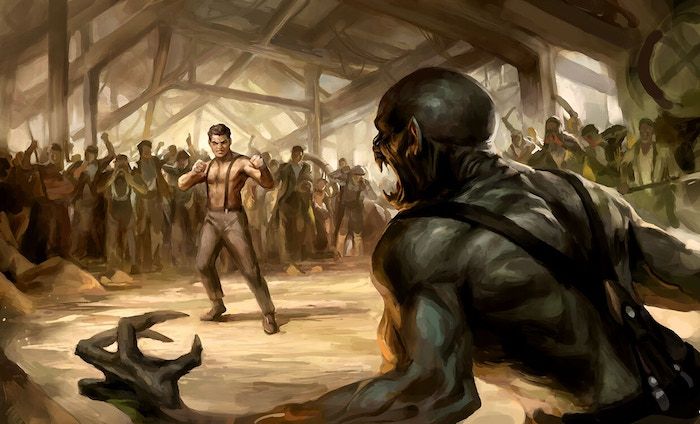
Cthulhu Awakens uses the company’s versatile AGE (Adventure Game Engine) system that was originally developed for the licensed Dragon Age RPG in 2010 and has evolved alongside the company.
“People really liked the rules when that came out,” says Chris. “And they start asking us for a version of the rules that wasn’t tied to the Dragon Age setting. So that’s how I ended up doing Fantasy AGE, which is very similar to Dragon Age RPG but developed some different magic systems and things like that. Then as we continue to make more games, each one would customize the rules to better fulfill its mission. Then, when we got to Modern AGE, the core, three classes of Dragon Age and Fantasy AGE have been Warrior, Mage, and Rogue. You can play Modern AGE with supernatural stuff, but you don’t have to – you can just do strange historical things if you want to. So if you’re not playing a supernatural thing, then you end up with two classes, right? The Rogue and the Warrior, and when you’re down to two classes what’s the point?
“So Modern AGE is built without classes and gives you some more flexibility in making your, your character how you want it. It was also designed by Malcolm Shepard to have a lot of dials that you can turn. The biggest thing is how health works in the game where you pick a mode of play. So there’s Gritty, Pulpy, and Cinematic. In the Gritty version getting shot – it sucks. Getting shot is dangerous and your health does not continue to go up and up and up.
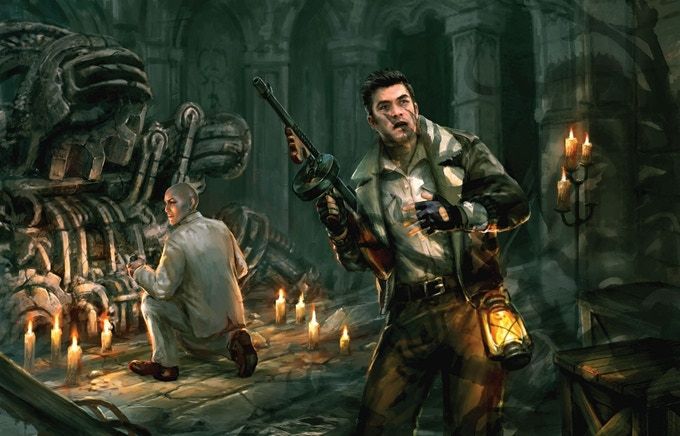
“Pulpy is more you know, 1930-style punch ups, but you’re more heroic than a realistic game would be, then Cinematic is just like, ‘Wow’. For Cthulhu Awakens, we took Modern AGE, but then we customize it again for the Mythos and that’s where the new stuff came in. Instead of using all three modes, Cthulhu Awakens is essentially between Gritty and Pulpy. But you have the option – if you want – to use the Fortune rules that we did for The Expanse RPG. Because in The Expanse, stuff can happen, like, you know, a giant metal slug can punch through a spaceship and go through you. And if that happens, it doesn’t matter how much health you have – your entire chest explodes. That’s it. So Fortune is more about being lucky enough to avoid things like that, and it doesn’t really get into damaging you until you’ve already lost a lot of your Fortune by surviving these incidents. That system is an option in Cthulhu Awakens so if you want to do something that’s a little more wahoo, you can do that.”
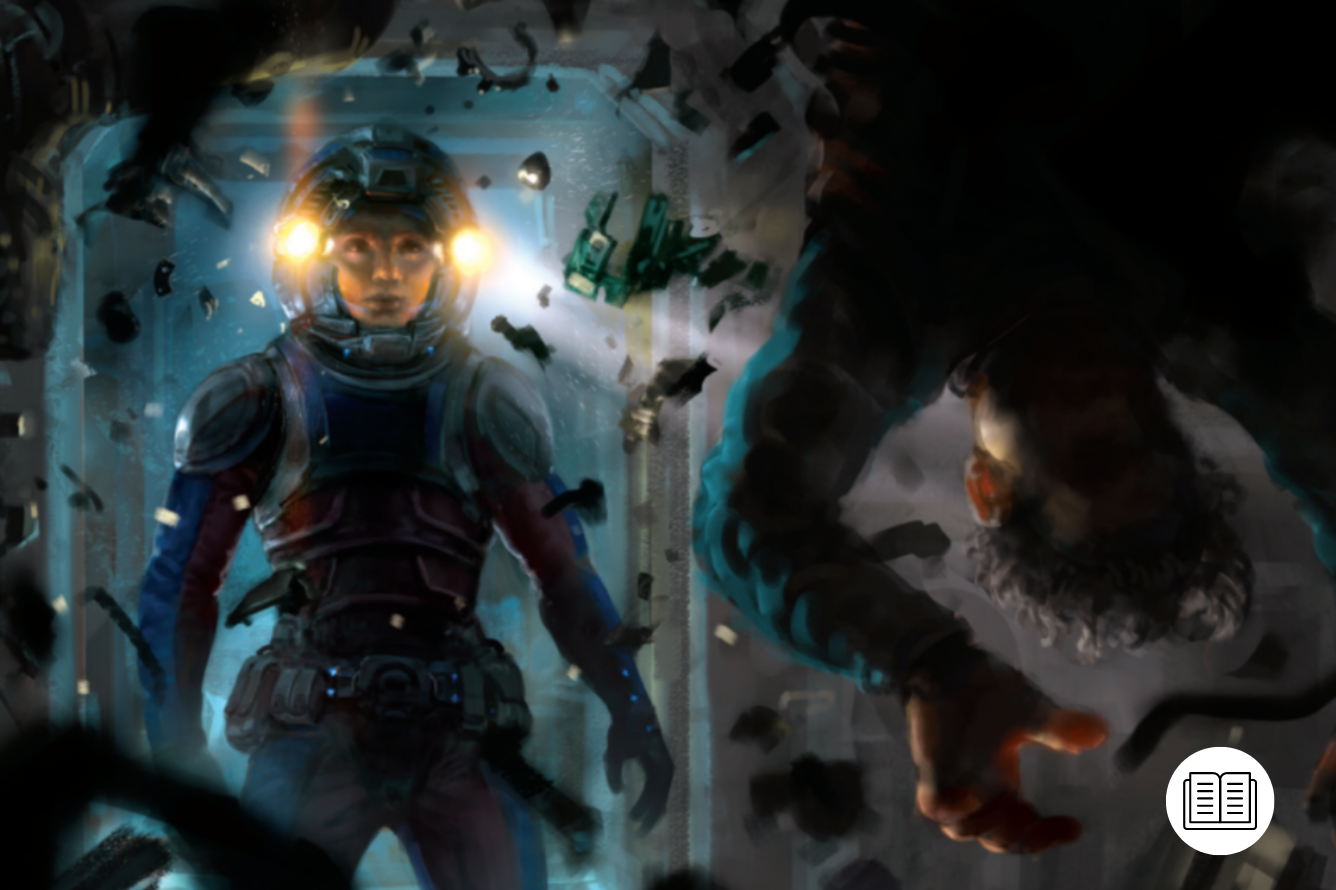
Why D20 was Surprisingly Punk Rock
Whilst the advent of the AGE System has come to define Green Ronin’s second decade, its first belonged to D20.
Introduced in 2000 with D&D 3rd Edition, the D20 System was released under the Open Games License (OSL) by Wizards of the Coast. This unusual move from the gaming giant, effectively gauranteed their prominence in the hobby for much of the 2000s but also gave many smaller companies an opportunity to get their books in front of fans of the world’s most popular roleplaying game.
Though “it was a business wonk who had the idea”, it’s kinda accidentally sorta punk rock.
At the time, Chris was working at Wizards during their ill-fated experiment with 28mm miniatures. Though hired as a roleplaying game designer, opportunities to make his mark on such an established brand were limited, especially as so many D&D lifers had come across from its original owner TSR following its 1997 acquisition. (Wizards, meanwhile, was acquired by toy giant Hasbro in 1999).
“The miniatures thing was new,” he recalls. “So it felt like that would be fun. But Wizards had really delusional ideas about what we could do with miniatures with the budget that they actually gave us. The COO once told us to kick Games Workshop’s ass, and I’m like, ‘There’s literally three of us working on this. Games Workshop: 1000s of people, a huge factory, hundreds of game stores…’
“I was out of doing roleplaying design, except a little bit of freelancing, that period and when I started Green Ronin. I just felt like, ‘Ah, you know, I kind of miss doing more RPG work – so I’m just gonna start this side company’. The first thing that we did was a game my friend Todd [Miller] and I wrote called Ork! The Roleplaying Game, that was very much a beer and pretzels game. But while we were working on that, that’s when all the chatter started up about the Open Game License at Wizards.
“I was sitting in this meeting with other people from R&D and the discussion basically was, ‘There are certain products that Wizards can’t do profitably, particularly short adventures, like 32-page adventures’. One of the hopes was that other companies would pick that up, so Wizards wouldn’t have to because the feeling was that Wizards really just wasn’t agile enough to be doing that sort of thing and they just didn’t make enough money when they did. So I was like, ‘Well, shit. I’ve got a new company. We’re agile’, you know? Let’s give it a go.”
Armed with an insider’s familiarity with the new system, Chris timed Green Ronin’s debut release with the release of D20 itself in the D&D Player’s Handbook. Appropriately enough, Death in Freeport played like a swashbuckling Call of Cthulhu, and further books in the setting built on its world of pirates, cults, and ancient alien gods.
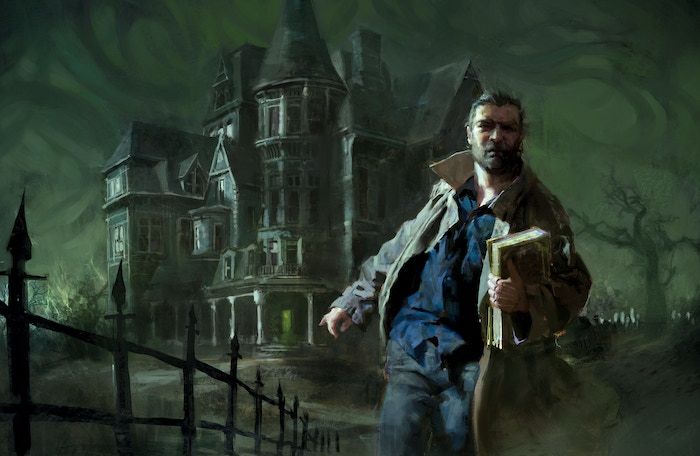
Kickstarter – to refer back to Cthulhu Awakens – is now a de-factor pre-order platform for the tabletop industry, rather than a means for enthusiastic amateurs to short circuit the system as it was thirteen years ago. Green Ronin first dipped its toes in 2013 – the year that Veronica Mars crowdfunded its way into history. They might not be the earliest of the established RPG publishers to fund a product on Kickstarter, but they’re definitely one of them – a testament to the agility of the company over a decade on from Death in Freeport.
“The first Kickstarter we did was a 10-year anniversary edition of our superhero roleplaying game, Mutants & Masterminds. That was because I was like, if we do a special edition of this, our fans are going to want it. So there’s no real risk in running this Kickstarter, but we will then learn how it works by doing one and that will help us later on. So we’ve been using it since then. Not for everything, by any stretch of the imagination. There are lots of books, we make the traditional way, release them into the book trade and get them into stores. And almost all of our Kickstarter stuff is available for stores.”
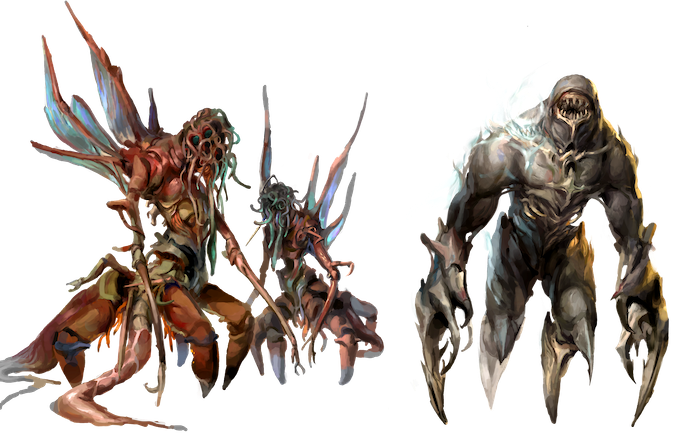
The changes in Kickstarter – the greater professionalism, and the arrival of established game lines and settings – have been accompanied by rocketing expectations. Whilst the agility of a smaller company is still as important as it was back in the D20 days, the resources and experience of a larger one now rival it.
“When Kickstarter and crowdfunding started, what I liked about it was that you could take an idea to people and say, ‘Would you pay money for this?’ And if they say yes, or enough of them say yes, you’re like, ‘Awesome, I will now invest in that thing’ and know we’ve got money to make it and everyone will be happy. But, basically, there have been some very high-profile Kickstarters that have shit the bed.
Kickstarter is very clear that it’s not a pre-order and you’re investing in something and all this kind of stuff, but people rightly feel that if they paid for something that they ought to get it. So they have become much warier of supporting Kickstarters that don’t have much to show, so you have to now put work [in] and spend money ahead of time to even do a Kickstarter.Chris Pramas
“You really want to try to maximize your chances, which means bringing things that you think have the possibility of doing very well in a crowdfunding platform. Ideally, you want something that’s just going to take off and grow and grow and grow. But because Kickstarter is an art, not a science, it’s hard to actually pick exactly what factors there are that allowed that to happen. Sometimes you can look at two Kickstarters that are extremely similar. And one of them takes off makes hundreds of thousands of dollars, and the other one stalls out at 15 and just doesn’t go anywhere. Why is that? It’s hard to say, so you take your best guesses, you pre-market, you try to pick things that are going to be enticing to a lot of people.
“Honestly, it’s one of the reasons we decided to move forward with Cthulhu Awakens because if gamers have proved one thing in the last 40 years, they love Cthulhu.”
This article was first published on March 11th, 2022 on the original Companion website. It has been updated with more information about the game.
The cost of your membership has allowed us to mentor new writers and allowed us to reflect the diversity of voices within fandom. None of this is possible without you. Thank you. 🙂








